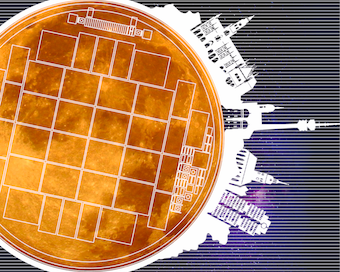Speaker
Description
In view of the high luminosity phase of the LHC (HL-LHC) to start operation around 2026, a major upgrade of the tracker system for the ATLAS experiment is in preparation. The expected neutron equivalent fluence of up to 2.4 × 1016 1 MeV neq./cm2 at the innermost layer of the pixel detector poses the most severe challenge. Thanks to their low material budget and high charge collection efficiency after irradiation, modules made of thin planar pixel sensors are promising candidates to instrument these layers. To optimise the sensor layout for the decreased pixel cell size of 50 × 50 μm2, three dimensional TCAD device simulations are being performed to investigate the charge collection efficiency before and after irradiation.
In addition, results of the latest silicon sensor productions at the Semiconductor Laboratory of the Max-Planck Society (MPG-HLL) will be presented. Amongst others, results of punch-through free testing methods as well as process optimisations with respect to the employed p-spray inter-pixel isolation technique are being shown.
